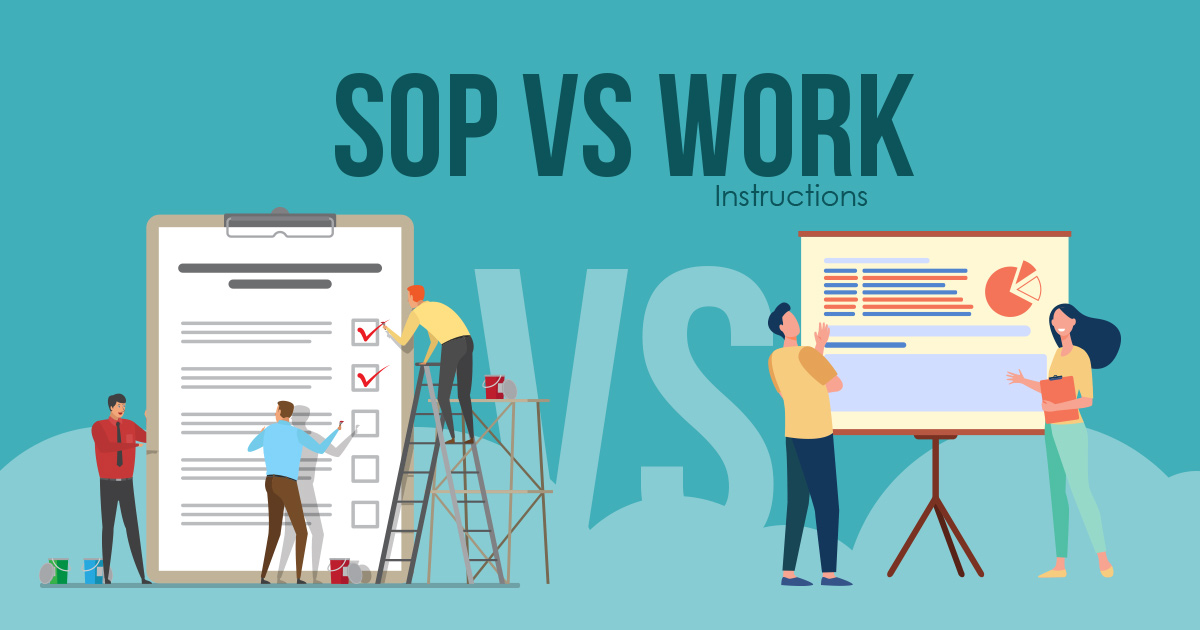SOP vs Work Instructions: Key Differences and When to Use Each

In any workplace, standardizing processes is essential for consistency and efficiency. Two common tools for this are standard operating procedures (SOPs) and work instructions. While they seem similar, they have different purposes. Knowing the difference between SOP and work instructions will help you document tasks and processes effectively.
Understanding SOP and Work Instructions
A Standard Operating Procedure (SOP) is a detailed guide explaining the steps of a process. It shows the “what” and “why” behind the process. SOPs are used to maintain uniformity and ensure everyone knows the process.
McKinsey & Company found that companies with clear SOPs perform 31% better. SOPs help simplify processes, ensure quality, and support growth while keeping control, making them key to long-term success.
Key Features of SOPs:
- Provide a broad view, covering entire processes rather than focusing on individual tasks.
- They are purpose-driven, explaining why a process is important and outlining its goals.
- They ensure consistency by standardizing how teams perform work.
- Designed for employees who need to understand the full process.
On the other hand, work instructions are step-by-step guides focused on completing specific tasks. They go into the “how” of a process and are used for detailed instructions.
Key Features of Work Instructions:
- Provide precise details, giving exact steps to complete a task.
- They have a specific focus, covering one task at a time.
- They are tailored for a clear audience, intended for those who will perform the task.
- Often include visuals, such as diagrams or checklists, to make tasks easier.
Benefits of SOPs and Work Instructions
Both SOPs and work instructions have unique benefits:
Benefits of SOPs:
- Ensure consistency across teams.
- Help employees understand the process.
Benefits of Work Instructions:
- Reduce mistakes during tasks.
- Make complex tasks easier with visuals.
Using both ensures processes and tasks are well-documented and easy to follow.
SOP vs Work Instructions: Key Differences
Here’s a clear comparison of SOP and work instructions:
Purpose
SOPs cover the whole process and its purpose, while work instructions focus on detailed steps for a task.
Scope
SOPs have a broad scope, addressing multiple tasks, whereas work instructions are narrow, focusing on one task only.
Audience
SOPs are intended for employees learning the process, while work instructions are designed for employees performing the task.
Detail Level
SOPs provide general guidance, while work instructions are extremely detailed.
Examples of SOP and Work Instructions
Here are practical examples to illustrate the difference between SOPs and work instructions:
Example 1: Customer Support
SOP: Handling customer complaints.
Describes the overall process, including receiving complaints, documenting them, escalating if necessary, and resolving the issue.
Work Instructions: Processing a refund.
Step-by-step guide on how to log into the system, input customer details, approve the refund, and confirm the transaction.
Example 2: Employee Onboarding
SOP: Onboarding new employees.
Covers all steps, such as preparing onboarding materials, scheduling training sessions, setting up IT accounts, and completing HR paperwork.
Work Instructions: Setting up an employee email account.
Detailed instructions on logging into the email system, creating a new account, assigning permissions, and sending a welcome email.
Example 3: Manufacturing Process
SOP: Producing a product batch.
Outlines the full process, from gathering raw materials to quality checks and packaging.
Work Instructions: Operating a specific machine.
Step-by-step details on starting the machine, setting configurations, loading materials, and shutting it down safely.
Example 4: Food Service
SOP: Preparing for restaurant opening.
Describes the sequence of tasks, including setting up tables, restocking supplies, and ensuring cleanliness.
Work Instructions: Cleaning a coffee machine.
Precise steps for disassembling parts, washing components, reassembling, and testing the machine.
These examples highlight how SOPs provide a broader overview, while work instructions focus on individual tasks.
When to Use SOPs vs Work Instructions
Knowing when to use each is important.
Use SOPs When:
- You need to explain a process from start to finish.
- Teams need to understand the bigger picture.
Use Work Instructions When:
- A task requires exact steps for completion.
- The task is critical or new to the employee.
Simplifying Process Management with SOPs and Work Instructions
SOPs and work instructions both play important roles in keeping processes smooth and consistent. SOPs give a broad overview of entire processes, while work instructions focus on the exact steps for individual tasks. Knowing when to use each helps ensure tasks are done correctly and efficiently. By using both, organizations can improve workflow, reduce mistakes, and support a more organized and effective team.
